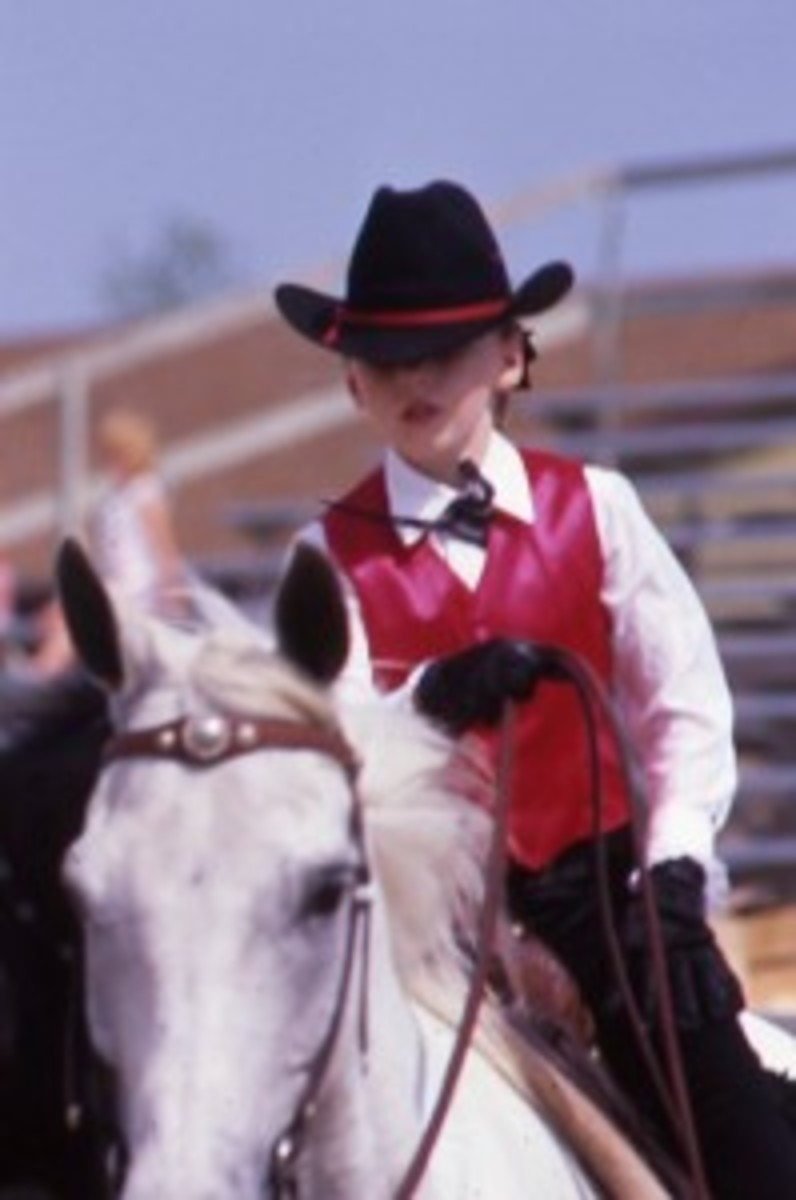Here’s the wrong way, the right way, and why the difference matters.

The Wrong Way
Anything less than one full horse-length is too close. At this distance, if the horse in front suddenly bobbles or slows, you’ll have to check your horse to avoid running up on him. Or, if the front horse’s stride is slower or shorter than your horse’s, you’ll be forced to pass him. Either of these outcomes is undesirable. The first, checking your horse, spoils the even striding and cadence that’s so important in a pleasure class. The second, passing the other horse (or circling away from the rail to avoid him), is considered less-than-ideal presentation in today’s rail classes. Even if you triple the following distance to almost one horse-length it’s still not enough to allow you the “room to maneuver” you need to avoid having to make subtle adjustments and/or evasive maneuvers.
The Right Way
At least two horse-lengths or more if you can manage it is preferable for several reasons. First, it insulates you from the horse in front, so that any bobbles or speed changes he makes won’t affect you. Second, it helps make any striding differences between your horse and the one in front irrelevant; in other words, even if the front horse covers ground a bit slower than your horse, you probably won’t be creeping up on him before the call for a change in gait. And third, you’re “highlighting” your horse for the judge by making it easy for him or her to evaluate your horse without distractions. Of course, the total number of horses in the class will affect how much distance you’re able to maintain between you and other entries. But, in general, try for as much distance as reasonably possible.
Strategy
To maintain the distance between you and other entries, plan ahead. Don’t concentrate only on your own horse, as many riders do. Instead, keep an eye out for what’s going on around you. If you’re starting to creep up on the horse directly in front of you, for example, plan to go deep into the next corner to maintain your ideal distance. Or if your horse is getting nervous about a horse coming up behind him, cut the next corner a bit to keep the horse in back from having to pass you.
Carol and Steve Metcalf train horses and riders for competition on the Quarter Horse circuit from their home base in Pilot Point, Texas. Carol has produced a number of world champions: In 1997, she rode Invest In Old Gold to the reserve championship in 2-year-old Western pleasure at the AQHA World Show.
This article first appeared in the October 2000 issue of Horse & Rider magazine.






